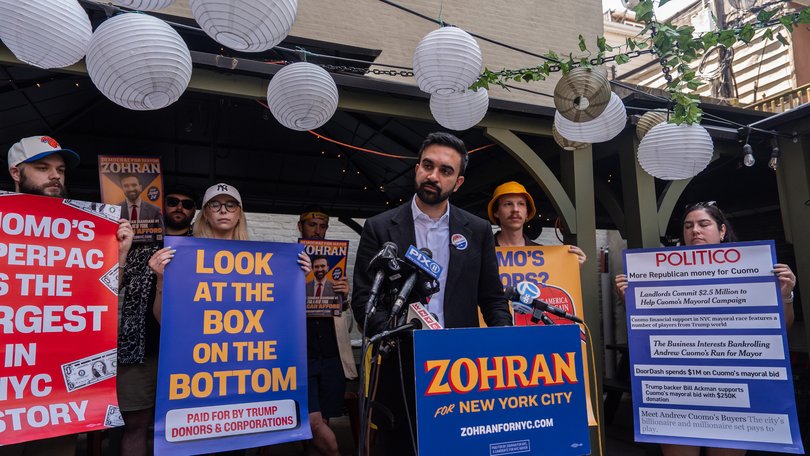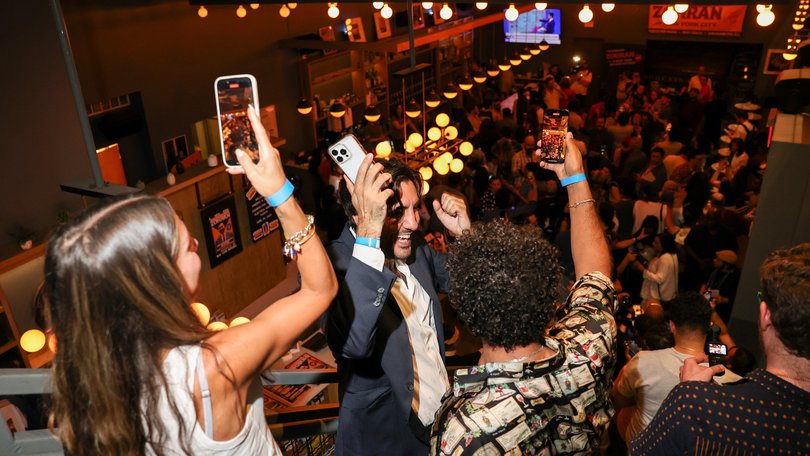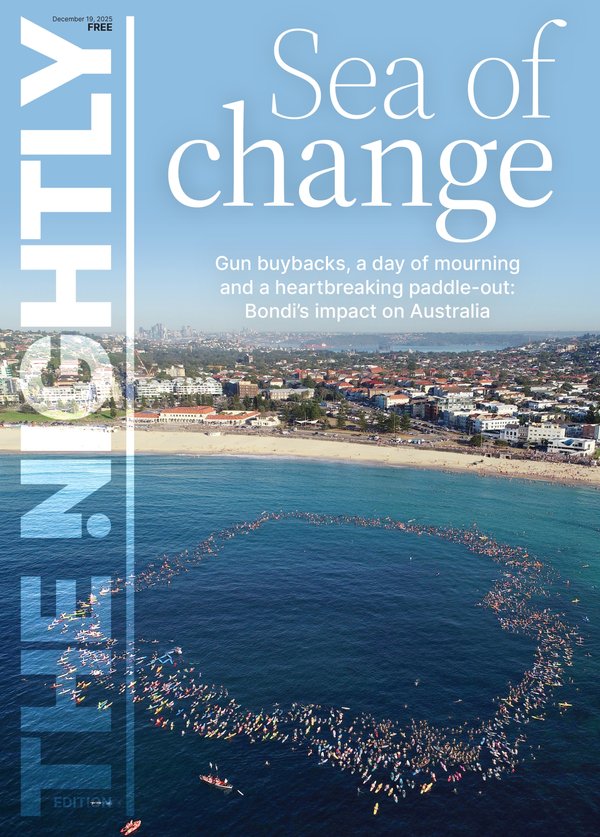JACKSON HEWETT: Don’t mess with the Zohran! What Australia can learn from New York rising star

A 33 year-old south Asian muslim, with a socialist agenda and a pro-Gaza stance has achieved the unthinkable in New York, smashing all comers in the Democratic primary and energising young voters enraged by the political sway of billionaires.
Zohran Mamdani, one-time Ugandan rapper, three-time New York Assemblyman and former canvasser for Bernie Sanders, is lighting up the internet with his slick social media presence and punchy campaign slogans promising free buses, affordable housing and other handouts, all funded by higher taxes on the rich.
Mr Mamdani, born in Uganda but raised in New York from the age of seven by his film-maker mother and academic father, is being hailed as the new torch bearer for the Democratic Party at a time when it is struggling to find a convincing message to win back working class voters who put their faith in Donald Trump.
Sign up to The Nightly's newsletters.
Get the first look at the digital newspaper, curated daily stories and breaking headlines delivered to your inbox.
By continuing you agree to our Terms and Privacy Policy.Like another Sanders acolyte, fellow New Yorker Alexandria Ocasio-Cortez, Mr Mamdani is firing up the youth vote, with many New Yorkers saying they registered to vote in local elections for the first time because of him.
Mr Mamdani clearly has a knack for connecting with new audiences. His TikTok videos have been liked more than nine million times, while on Instagram he has over two million followers. He is charismatic and authentic on camera, willing to make fun of himself and lean into his roots, releasing Bollywood-inspired videos and communicating in Hindi, Bangla and Urdu.
Like Barack Obama’s out-of-nowhere elevation, his design team was first class, borrowing from iconic colours and lettering drawn from recognisable NY street signs and logos.
But it was his simple message that resonated, staying laser focused on cost-of-living issues in one of the world’s most expensive cities.

He received almost no support from the media—with the famously liberal New York Times urging voters not to vote for him — nor from wealthy donors. His opponent, former NY Governor Andrew Cuomo, raised a $US25m ($38m) war chest that couldn’t make a dent.
Despite his youth, lack of experience and pro-Gazan message in a very Jewish city, Mr Mamdani won anyway, prompting one of the Democratic Party’s most influential elder statesmen, James Carville, to describe the upcoming mayoral race as “a national election, not just a New York City election”.
What is fascinating about Mr Mamdani is the way he managed to stitch together a broad coalition of voters across economic lines. He performed well in highly ethnicised boroughs like Queens, but also in the white, middle class neighbourhoods of Brooklyn, even the high-net-worth areas around New York’s Financial District and Midtown.
It was the youth vote that carried the day in those affluent neighbourhoods, with 67 per cent of college graduates aged 18 to 34 ranking Mr Mamdani first, compared to Mr Cuomo’s 6 per cent, according to a poll by the Manhattan Institute.
Lessons for Australia
New York City is a long way from anytown, Australia, but it remains a cheaper place to live than any of this country’s capital cities when measured by house prices relative to median incomes.
That makes Australian youth highly susceptible to being drawn to Mr Mamdani’s message, according to Kos Samaras of Redbridge Group.
He said that despite Labor’s landslide victory in the 2025 federal election, its grip on young voters may not be as secure as the result suggests.
“At the last federal election, the largest political party among Gen Z wasn’t Labor or the Coalition,” he says. “It was the Greens, who received 33 per cent of their primary vote. That was true right across the country—not just in the cities.”
With Gen Z and Millennials now making up 47 per cent of the electorate, compared to 24 per cent for Baby Boomers, Mr Samaras said social-media-savvy, non-establishment candidates like Mr Mamdani could have an outsized influence in Australia too.
“They will see Mamdani and others like him and say, ‘That’s what I want here’. And so the calibre of politician that’s now required to appeal to this generation is much higher,” he said.
Mr Mamdani’s message — centred on housing affordability, pro-climate policies like free public transport, and tax increases for the wealthy alongside relief for the middle and working classes—aligned squarely with the top three concerns of young Australians, Mr Samaras said.
“Young people are telling us in no uncertain terms that they’re living in an unequal system where they see wealth increasingly concentrated,” Mr Samaras said.

“They say they were promised that if they studied hard and got a degree, they’d be okay — but now they feel they’ll never own a home. They see a system built for older Australians, where the tax system rewards those who already own assets, not those trying to acquire them.”
Labor is alive to this issue. Speaking recently at the National Press Club, its national campaign director, Paul Erickson, acknowledged that cost of living dominated the 2025 election to a degree not seen outside wartime or pandemic.
Labor’s answer mirrored the redistributive handouts favoured by Mr Mamdani: tax cuts, student loan relief, cheaper childcare, and energy bill support.
“The number one question for people by far was cost of living,” Mr Erickson said. “Our strategy was to have the best answer on who could make you better off over the next three years and drive the campaign towards that question.”
Mr Erickson said younger voters hadn’t entirely walked away from Labor, but nor were they rusted on. Instead, they were “prepared to consider the alternative”, especially in a landscape where major parties’ primary votes are in structural decline and “there is no such thing as a safe seat anymore”.
The Government is now weighing how to balance economic prudence with a sharper progressive edge; particularly on housing, climate, and tax.
“The big one is a solution to dealing with the intergenerational inequality that now is clearly befalling democracies, and in turn, upending political orthodoxy,” Mr Samaras said.
“In Europe, that has young people gravitating to the right; in Australia it is to the Greens.”
“Labor needs to attract this generation by embracing significant reforms that tackle the structural deficiencies that are animating younger Australians. That was absent in the first term,” Mr Samaras said.
Could Mamdani’s Policies Gain Traction Here?
While intergenerational economic inequality is becoming a growing issue in Australia, it is not as acute as in the United States.
A new report from the e61 Institute shows that since the Global Financial Crisis, Australians under 40 have seen their incomes grow at less than half the rate of older cohorts, while housing wealth has overwhelmingly flowed to older, asset-rich households.
Younger Australians are now disproportionately reliant on wages, while tax settings continue to favour wealth accumulation.
Even so, Matt Nolan, research manager at the e61 Institute, cautions against overstating the severity of Australia’s inequality.
“Australia has always had a large redistributive strength,” he said. “It’s a society where people still can go out there and achieve based on their own efforts, and there isn’t the same inequality that you observe in Europe or the United States.”
Mr Nolan is also sceptical of the kinds of policies pushed by Mr Mamdani, such as rent freezes and free buses.
“Rent freezes might feel good in the short term,” he said, “but they reduce the incentive to build — and that just worsens affordability in the long run.”
Similarly, free public transport often disproportionately benefits inner-city residents who already have access, rather than helping those in outer suburbs who face real barriers to mobility.
He believes that calls for more radical interventions tend to emerge when people feel the game is rigged.
“When people do ask for those (kinds of policies), it’s usually because they feel that the hand is stacked against them,” Mr Nolan said.
“Which, it appears, is not the case in Australia — and that’s a good thing.”
Whether young Australians find themselves agreeing with that argument might come down to the messenger.

